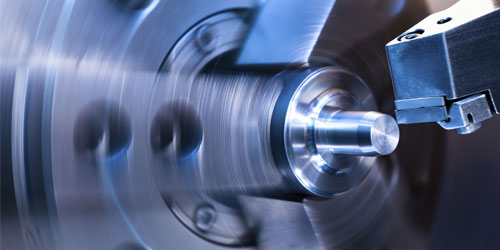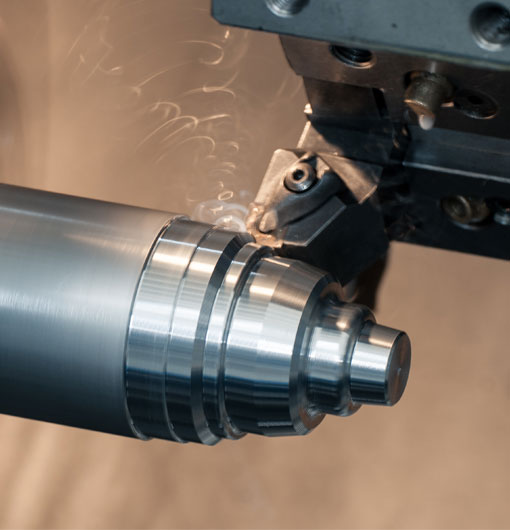CNC turning is a machining process that utilizes computer-controlled tools to create precise, intricate and symmetrical parts, often out of metal. This technology has revolutionized the manufacturing industry, enabling immense precision, uniformity, and efficiency in production. In this comprehensive guide, we will delve into the world of CNC turning, exploring its definition, various aspects, applications, and how beginners can get started in this exciting field.
What is CNC Turning?
CNC stands for Computer Numerical Control, and it is a process that uses a computer to control various tools, including lathes, mills, and routers. In CNC turning, a lathe – a stationary cutting tool – spins the raw material while a computer directs and controls the tool's movements to cut and shape the workpiece into the desired form. As a result, parts with complex, intricate shapes can be produced accurately and consistently, saving time and money while maintaining a high level of quality in manufacturing.
Benefits of CNC Turning
There are several advantages to using CNC turning over manual methods, including:
Speed:Since the process is automated and computer-controlled, it is much faster than traditional machining methods.
Precision:CNC turning enables high levels of accuracy, ensuring that each part is made exactly to the provided specifications.
Consistency:Due to the computerized nature of the process, each part is produced consistently, reducing the chance of errors from human operators.
Versatility:CNC turning can handle a wide variety of materials, including metal, plastic, and wood, making it suitable for a range of applications.
Reduced labor costs:By automating the process, companies can save on labor costs, as fewer operators are needed to oversee the machines.
Types of CNC Turning Operations
There are various types of CNC turning operations that can be used to create different features on a workpiece:
1. Facing:This involves removing material from the end of a workpiece to create a flat surface.
2. Boring:Boring is used to enlarge an existing hole in the workpiece, often to create a precise diameter.
3. Grooving:This operation creates grooves of varying widths and depths on the workpiece.
4. Drilling:Drilling uses a rotating cutting tool to create holes in the workpiece.
5. Taper turning:In this operation, a conical shape is created on a workpiece by gradually reducing its diameter along its length.
6. Thread cutting:Thread cutting is used to create threads on the surface of a workpiece, typically for fastening purposes.
Understanding CNC Turning Machines
CNC turning machines, also known as CNC lathes, come in various configurations, including:
Horizontal:In these machines, the axis of rotation is horizontal, and the workpiece is held in a chuck or spindle.
Vertical:Vertical CNC turning machines have the axis of rotation oriented vertically, and the workpiece is typically held on a horizontal table or fixture.
Swiss-style:Swiss-style turning machines are known for their precision and ability to produce complex parts. In these machines, the workpiece is held by a collet, and the cutting tools are mounted on a sliding headstock.
Multitasking:Multitasking machines combine the capabilities of CNC turning and milling, allowing for even greater versatility in part production.
Applications of CNC Turning
CNC turning is utilized in a variety of industries for creating precision parts. Some common applications include:
Automotive:CNC turning is used to create engine components, gears, and other precision parts for automotive manufacturing.
Aerospace:The aerospace industry requires high precision and reliable components, and CNC turning is used to create complex parts, such as turbine blades and aircraft components.
Medical:CNC turning is employed to create surgical instruments and implantable devices, wherein accuracy and precision are critical.
Electronics:In electronics manufacturing, CNC turning is used to create connectors, pins, and other components that demand precision and repeatability.
Getting Started with CNC Turning
For beginners interested in learning CNC turning, there are various resources and steps to consider:
1. Research:Begin by researching the basics of CNC turning, including machine types, operations, and programming.
2. Training:Enroll in a CNC programming course or online program to learn the ins and outs of the process, such as G-code programming.
3. Practice:Apply your knowledge by practicing on simulation software or acquiring hands-on experience at a local makerspace, school, or manufacturing facility.
4. Networking:Join online forums and communities dedicated to CNC turning to connect with experienced professionals, ask questions, and share tips.
By following this essential guide, you will gain a strong foundation in CNC turning and be well-equipped to explore further opportunities in this advanced manufacturing process. Whether you're pursuing a career in CNC programming or simply looking to enhance your manufacturing skills, this guide will help you master the art of CNC turning.
cnc turning definition













